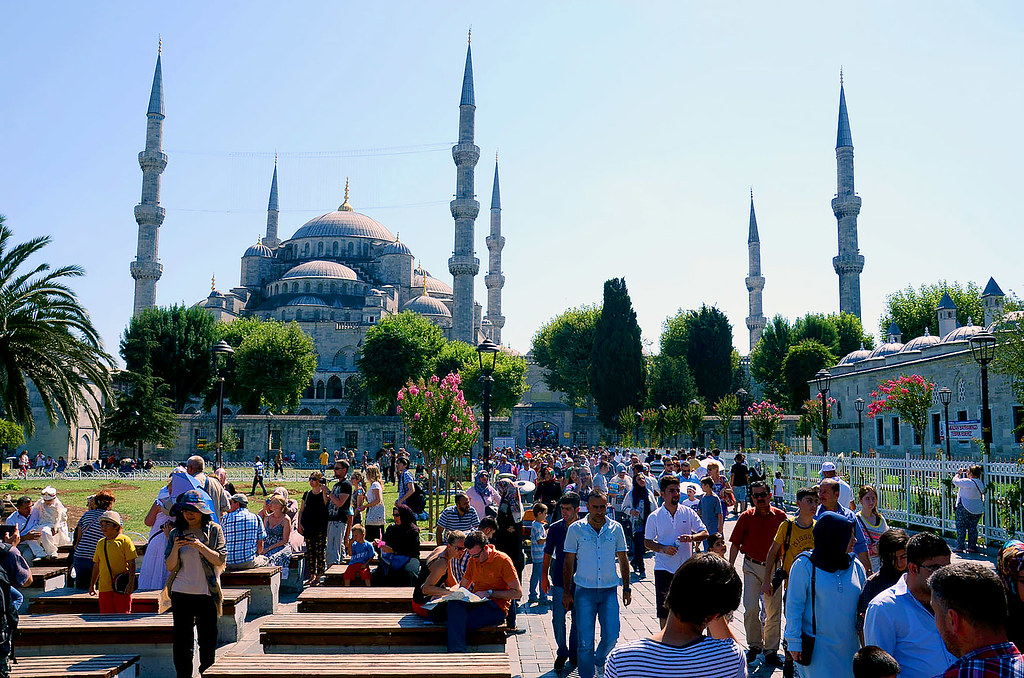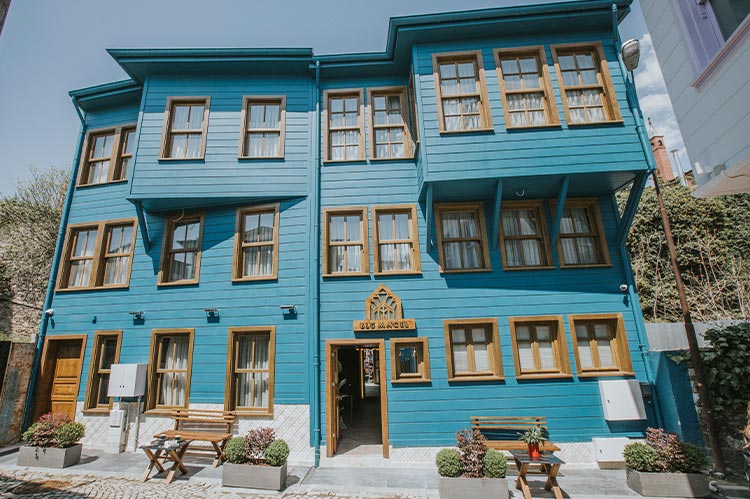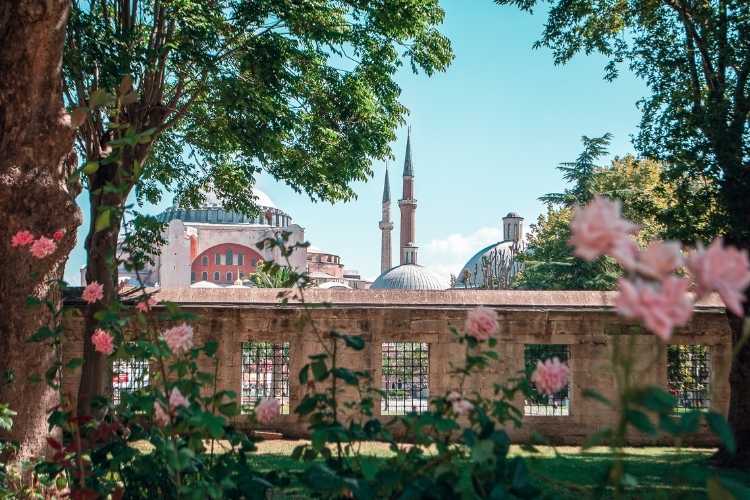
Sultanahmet is more than just a neighborhood, it’s the living heart of Istanbul’s history, a place where empires rose and fell, where faith, architecture, and culture intertwined over the centuries. Standing at the crossroads of Europe and Asia, Sultanahmet has witnessed the grandeur of Byzantium, the power of the Ottomans, and the evolution of modern Turkey.
Today, its skyline, adorned with domes and minarets, tells a story that spans more than 1,500 years. Walking through Sultanahmet feels like stepping into an open-air museum, where every street and stone whispers tales of the past.
From Byzantium to Constantinople
Long before it became Istanbul, this area was the beating heart of Byzantium, later known as Constantinople, the capital of the Eastern Roman Empire. Founded by Emperor Constantine the Great in 330 AD, the city was envisioned as the “New Rome.”
The Byzantine emperors built magnificent structures that still stand today, monuments that defined the spiritual and political power of their empire.
Hagia Sophia: The Eternal Symbol of Empire
No landmark captures the spirit of Sultanahmet like Hagia Sophia (Ayasofya). Completed in 537 AD under Emperor Justinian, it stood as the world’s largest cathedral for nearly a thousand years. Its massive dome, shimmering mosaics, and grand marble columns were designed to inspire awe, a symbol of divine power and imperial might.
When the Ottomans conquered Constantinople in 1453, Sultan Mehmed II ordered it converted into a mosque. The minarets were added, and Hagia Sophia began a new chapter as one of Islam’s greatest monuments. Today, it remains a functioning mosque and a UNESCO World Heritage site, welcoming millions of visitors every year.
From the rooftop terrace of Blu Ma’Cel Hotel, just a short stroll away, you can even glimpse its majestic dome rising above the Old City, a daily reminder of Istanbul’s layered history.
The Hippodrome of Constantinople: The Social Heart of an Empire
Just a few steps from Hagia Sophia lies the Hippodrome, once the beating heart of Byzantine public life. Built in the 3rd century and expanded by Constantine, it hosted chariot races, political rallies, and celebrations that brought the city together.
Although only fragments remain today, such as the Serpent Column, Obelisk of Theodosius, and Walled Obelisk, the site still conveys the energy of the ancient crowds who once gathered here.
Standing on this historic ground, it’s easy to imagine the thunder of horses, the cheers of the spectators, and the grandeur of an empire that ruled the Mediterranean world.
The Blue Mosque:Ottoman Elegance at Its Peak
Across the Hippodrome stands the Sultanahmet Mosque, better known as the Blue Mosque. Built between 1609 and 1616 during the reign of Sultan Ahmed I, it is considered the pinnacle of classical Ottoman architecture.
The mosque earned its nickname from the 20,000 hand-painted blue İznik tiles that adorn its interior. With its six minarets, cascading domes, and perfect symmetry, it represents the confidence of the Ottoman Empire at its cultural zenith.
When the call to prayer echoes from its minarets, blending with the sounds of modern Istanbul, you realize that Sultanahmet isn’t just a relic of history, it’s a place where tradition still lives.
Topkapi Palace: The Seat of the Sultans
A short walk north brings you to Topkapi Palace, the political and ceremonial center of the Ottoman Empire for nearly 400 years. Behind its imperial gates, sultans ruled over vast lands stretching from Hungary to Arabia.
The palace complex includes royal courtyards, the Harem, and the Imperial Treasury, home to priceless jewels, manuscripts, and sacred relics. Each chamber tells a different story of power, faith, and daily life in one of history’s most sophisticated empires.
Visitors wandering through its ornate halls can still feel the echoes of the royal footsteps that once shaped the destiny of nations.
The Basilica Cistern: Secrets Beneath the City
Below the bustling streets of Sultanahmet lies one of Istanbul’s most mysterious landmarks: the Basilica Cistern. Constructed in the 6th century under Emperor Justinian I, it once supplied water to the Great Palace and later to Topkapi Palace.
The underground space is supported by 336 marble columns, many repurposed from ancient temples. The two Medusa heads, one inverted and one sideways, add an air of mystery that fascinates visitors. The cistern perfectly captures Istanbul’s dual nature, a city both ancient and eternal.
Little Hagia Sophia: A Hidden Byzantine Gem
Before the grandeur of Hagia Sophia, Emperor Justinian commissioned the Church of Saints Sergius and Bacchus, now known as Little Hagia Sophia. Built in the early 6th century, it served as a prototype for its larger counterpart.
Today, this small but beautifully preserved mosque offers a quiet escape from the crowds, its intricate decorations and peaceful courtyard reflecting the elegance of early Byzantine design.
The Continuity of Life in Sultanahmet
Despite the centuries that have passed, Sultanahmet remains as alive as ever. Around its monuments, daily life continues, street vendors selling simit (Turkish bagels), children playing in the squares, and the scent of roasted coffee wafting from nearby cafés.
For travelers seeking to experience this living heritage, staying close to the landmarks is key. Blu Ma’Cel Hotel, located just moments away from Hagia Sophia and the Blue Mosque, offers a perfect balance of comfort, design, and authenticity. Its nautical-inspired rooms and warm hospitality make it a serene retreat within Istanbul’s most historic quarter.
A Journey Through Time
Sultanahmet is not just the heart of Istanbul, it’s the heart of empires, faiths, and civilizations. Every dome, column, and courtyard tells part of a story that continues to shape the city today. Whether you’re admiring Byzantine mosaics, tracing Ottoman footsteps, or simply watching the sunset over the Bosphorus, Sultanahmet reminds you that history here is not confined to the past, it’s alive in every breath of Istanbul.







